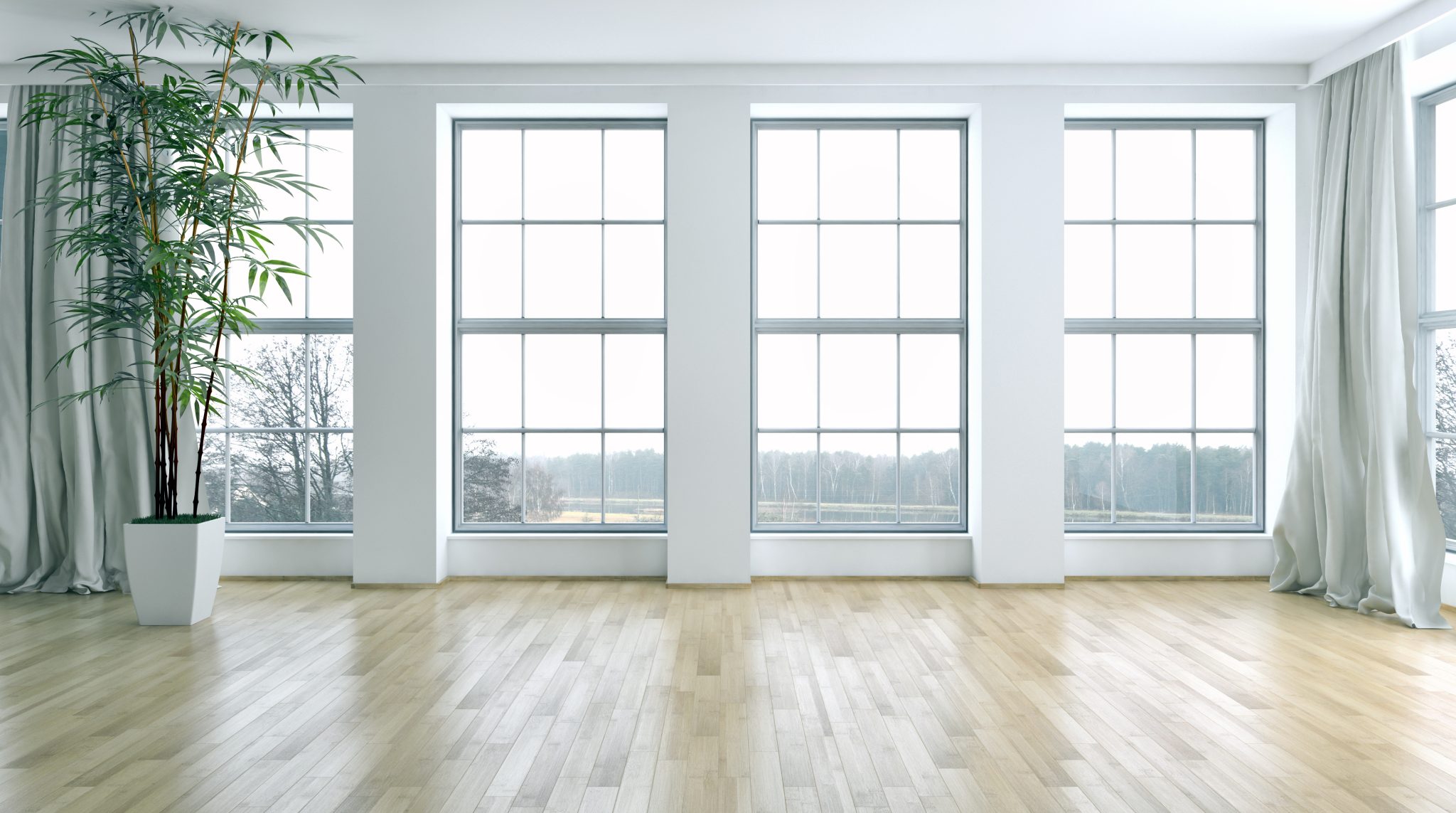Window Styling Tips By Window Type

*Updated April 14th, 2025
When selecting windows for your home or project, there’s more to consider than just the materials and energy efficiency. The operating style of your windows plays a crucial role in both the functionality and aesthetic of your space. Each window style offers unique benefits and potential drawbacks, from how they open and close to how they contribute to your home’s overall design and ventilation needs.
The right window style can enhance your room’s personality, improve energy efficiency, and meet practical needs such as ease of use and maintenance. Whether you’re looking for something modern and sleek or classic and timeless, it’s essential to evaluate your options carefully to find the perfect fit for your lifestyle and design goals.
To simplify the decision-making process, we’ve created this comprehensive style guide. It will help you understand the features, advantages, and ideal uses of various window types so you can make an informed choice that balances form and function.
Popular Types of Windows for Your Home
Choosing the right window style can completely transform the look and feel of your home—not to mention improve energy efficiency, ventilation, and natural light. Whether you’re replacing old windows or planning a full remodel, it helps to know what options are out there. Below, we’ll walk through some of the most popular window types, breaking down how they work, where they shine, and what to consider for each one.
Let’s take a closer look!
1. Single Hung Windows
Single hung windows are a classic choice and a go-to for many homeowners thanks to their simple design and budget-friendly price point. They have two panels, or “sashes,” but only the bottom one moves. You can slide it up to let in fresh air, while the top panel stays fixed in place. It’s a clean, timeless look that works well in almost any room. The one downside? Since only the bottom opens, you don’t get quite as much airflow as with other styles—but it’s still a solid option for bedrooms, bathrooms, or anywhere you want a sleek, no-fuss window.
2. Double Hung Windows
Double hung windows are like the upgraded version of single hung—they look similar, but both the top and bottom sashes can move. That makes them super versatile, especially when it comes to airflow and cleaning. Want to let out hot air near the ceiling while keeping the bottom closed for safety? Easy. Need to clean the outside of your second-story windows from inside the house? No problem—these sashes tilt in for hassle-free access. Plus, they come in tons of styles and materials, so you can find something that matches your home perfectly.
3. Arched Windows
Arched windows are all about adding charm and elegance. With their curved tops, they instantly elevate the look of a room and let in loads of natural light. You’ll often see them placed above standard rectangular windows for a dramatic, layered look—or used on their own as a design statement. Most arched windows are fixed, meaning they don’t open, but some styles do come with operable sections for ventilation. Either way, they’re a beautiful choice if you want to give your home a bit of architectural flair.
4. Bay Windows
Bay windows are great if you’re looking to add character and functionality to a room. These windows jut out from the exterior wall, creating a little nook on the inside that’s perfect for a reading bench, extra storage, or just soaking up some sun. Typically made up of three sections—one large center window flanked by two angled side windows—bay windows offer expansive views and tons of natural light. They’re a favorite for living rooms, kitchens, or anywhere you want to create a cozy focal point.
5. Casement Windows
Casement windows swing open like a door thanks to side-mounted hinges and a hand crank. They’re perfect for catching a breeze since you can open them wide and direct airflow into your home. These windows also provide a tight seal when closed, making them energy-efficient and great for noise reduction. Casements work especially well in hard-to-reach places like above kitchen sinks or in bathrooms—basically, anywhere you want ventilation without sacrificing style or ease of use.
6. Picture Windows
If your goal is to frame a stunning outdoor view, picture windows are the way to go. These large, fixed-pane windows don’t open, but they offer a clear, unobstructed view and let in tons of natural light. Because there are no moving parts, they’re super low maintenance and generally more affordable than operable windows. The trade-off is no ventilation—so you might want to pair them with nearby windows that do open if airflow is important. Still, picture windows are a gorgeous way to make a room feel bigger, brighter, and more connected to the outdoors.
7. Sliding Windows
Sliding windows are a practical pick, especially in rooms where vertical space is limited. Instead of opening outward or upward, these windows slide horizontally on a track—kind of like a patio door. They’re super easy to use and great for basements, bathrooms, or tight spots where a swinging window just won’t work. While they may not have the curb appeal of some other styles, they’re functional, space-saving, and can give your home a clean, modern vibe.
Best Window Styles by Room
Not every window works in every room—and that’s totally okay! The best window for your kitchen isn’t necessarily the best one for your bedroom. Each space in your home has its own needs when it comes to light, airflow, privacy, and even safety. Here’s a quick guide to help you match the right window style to the right room, so every area of your home functions and feels just right.
Kitchen: Casement or Sliding Windows
The kitchen is one of the most hardworking rooms in your home, so you want windows that are just as practical. Casement windows are perfect here—they crank open easily and can direct a breeze right where you need it (great for clearing out cooking smells!). If you’re working with limited space, sliding windows are another smart choice—they’re simple to open, easy to clean, and don’t interfere with counters or backsplashes. Plus, both styles let in tons of light to brighten up your cooking space.
Bathroom: Awning or Frosted Glass Windows
Bathrooms call for a little more privacy, but that doesn’t mean you have to sacrifice natural light. Awning windows are a great option—they hinge at the top and open outward, which means you can let in fresh air even during a rainstorm without losing your privacy. Want more coverage? Go with frosted or textured glass. It blurs the view while still letting daylight stream in, making your bathroom feel brighter and more spa-like without the awkward peeks from outside.
Living Room: Picture or Bay Windows
Your living room is a space for relaxing, hosting, and soaking in those backyard views—so go big! Picture windows are large, fixed-pane windows that offer an unobstructed look at the outside world and flood your space with natural light. If you want a little more architectural flair and even extra seating, bay windows are a great pick. They add character to the exterior of your home and create a cozy nook inside for reading, plants, or even a window seat.
Bedrooms: Double-Hung Windows
In bedrooms, you want a mix of ventilation, safety, and ease of use. Double-hung windows are a perfect match because both the top and bottom sashes open—giving you better airflow and more control over temperature. They’re also safer for kids’ rooms because you can open the top sash for air while keeping the bottom one closed. Bonus: Many models tilt inward, so you can clean them easily from inside your home. Functional, classic, and bedroom-approved.
Energy Efficiency Considerations
When selecting windows for your home, energy efficiency should be a top priority. Different window styles offer varying levels of insulation and airflow control, which directly impact your home’s heating and cooling costs. For instance, casement windows are known for their excellent energy efficiency because they seal tightly when closed, preventing drafts and minimizing heat transfer. Similarly, double-hung and sliding windows, while convenient, may be slightly less efficient if not properly sealed or maintained.
Key features like double or triple glazing significantly enhance energy efficiency. These windows have multiple panes of glass with insulating gas, such as argon or krypton, sealed between them, reducing heat loss and improving temperature regulation. Low-E (low-emissivity) coatings on the glass reflect heat back into the room during winter and keep it out during summer, further improving comfort and reducing energy consumption. Insulated window frames made of materials like vinyl, fiberglass, or wood composites also play a critical role in minimizing thermal transfer and maintaining a consistent indoor temperature.
By choosing energy-efficient window styles and features, you can lower utility bills, reduce your environmental footprint, and create a more comfortable living space year-round. For optimal results, consider pairing these features with proper window placement and shading solutions to maximize natural light while minimizing energy loss.
Customization Options
Personalizing your windows allows you to create a look that perfectly complements your home’s aesthetic while meeting your unique functional needs. Custom window styles provide flexibility in choosing colors, finishes, and sizes that align with your interior and exterior design. For instance, you can opt for bold colors to make a statement or neutral finishes for a timeless, understated look. Custom sizes ensure a perfect fit for non-standard window openings, enhancing both the appearance and energy efficiency of your space.
Decorative elements further elevate the design of your windows. Adding grilles can create a classic, divided-light appearance, ideal for traditional or colonial-style homes. Frosted or textured glass offers privacy while maintaining natural light, making it a great choice for bathrooms or front doors. Built-in blinds or shades provide a sleek, modern solution for light control and privacy without the need for external treatments, making them perfect for minimalist interiors.
Working with a custom window manufacturer provides unparalleled opportunities to tailor your windows to your exact specifications. Custom manufacturers often offer a wider variety of materials, styles, and finishes than off-the-shelf options, ensuring you get a product that aligns with your vision. Additionally, they can incorporate advanced features, such as energy-efficient glass or smart window technology, to meet both design and performance goals. Custom windows not only enhance your home’s aesthetics but also add long-term value and functionality, making them a worthwhile investment for any renovation or new build.
Conclusion
Choosing the right window style for your home or project is a significant decision that impacts both the functionality and aesthetic appeal of your space. From the classic charm of arched windows to the practicality of sliding windows, each type offers unique benefits tailored to different needs and preferences. By considering factors like ventilation, maintenance, energy efficiency, and how the window contributes to your home’s overall design, you can make a choice that enhances your living environment while reflecting your personal style.
Whether you prioritize unobstructed views with picture windows, versatility with double-hung windows, or the architectural elegance of bay windows, the perfect solution exists to meet your needs. Use this guide as a resource to weigh the pros and cons of each style, and take the time to visualize how they will fit into your space.
Your windows are more than just functional elements—they are an integral part of your home’s character. With careful selection, you can create a space that is beautiful, efficient, and tailored to your lifestyle. Ready to take the next step? Explore your options today and transform your home with new windows!
Additional Windows Resources
- Pros and Cons of Floor to Ceiling Windows
- 9 Reasons to Upgrade to Energy-Efficient Windows
- Top Window Lock Options
- Transform Your Home with Transom Windows

Anna has over six years of experience in the home services and journalism industries and serves as the Content Manager at MyHomePros.com, specializing in making complex home improvement topics like HVAC, roofing, and plumbing accessible to all. With a bachelor’s degree in journalism from Auburn University, she excels in crafting localized, comprehensive guides that cater to homeowners’ unique needs. Living on both coasts of the United States has equipped her with a distinctive perspective, fueling her passion for turning any house into a cherished home through informed, personalized decision-making.








